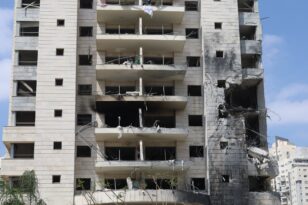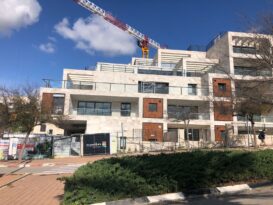The long-awaited Tel Aviv Metro — Israel’s most ambitious transportation project — is facing major delays, with the opening date now pushed back to at least 2040. While construction has begun in a few locations, political debates, regional instability, and bureaucratic hurdles have created uncertainty about when the system will actually be up and running. Though real estate development continues in full force across the Tel Aviv metropolitan area, the delay is affecting accessibility, urban planning, and the marketing of projects that had banked on the metro’s timely arrival. Here’s what buyers, investors, and city-dwellers need to know.
The Tel Aviv Metro, also known as MetroTLV, is Israel’s boldest infrastructure endeavor to date — a subterranean network designed to support one of the fastest-growing and densest urban regions in the Middle East. Complementing the above-ground light rail system currently under construction, the metro is intended to serve over 2 million riders daily via three underground lines (M1, M2, and M3) stretching over 150 kilometers with 109 stations.
Estimated to cost more than NIS 150 billion, the project promises to reshape commuting, reduce traffic, cut emissions, and support urban growth across Gush Dan — the greater Tel Aviv area that includes Ramat Gan, Petach Tikva, Holon, Bat Yam, and beyond. Originally scheduled to begin operations in 2034, recent internal projections suggest that won’t happen until 2040 at the earliest, and some industry experts believe full completion could extend into the early 2050s.
What’s Causing the Delays?
A mix of politics, bureaucracy, conflict, and logistics are behind the slowdown. While the vision remains intact, the practical rollout has proven deeply complicated.
1. National Planning Disputes
At the heart of the delays is a bottleneck in the approval of TAMA 70, the National Outline Plan that governs planning and development around the metro’s future stations. The plan was expected to unlock high-density construction near the metro routes and shape new mixed-use districts. However, in early 2024, Transportation Minister Miri Regev demanded revisions to extend certain lines toward the Samaria region, pushing the plan off the government’s approval agenda. Until TAMA 70 is finalized, certain rezoning and building rights remain in limbo — though not all projects are directly affected.
2. War-Time Headwinds
Israel’s ongoing war with Hamas and related regional instability have created ripple effects throughout the infrastructure sector. International firms — vital for tunneling and high-tech construction — are more hesitant to participate. The security situation has also made it more difficult to bring in foreign labor, which is essential for the scope of the underground works.
3. Operational Lag
While some early groundwork has begun, including excavation at depot sites in Segula, Masovim, and Rishon Lezion, full-scale tunneling in city centers isn’t expected before 2028. That means visible progress is still years away for most neighborhoods. The construction timeline itself is lengthy — with each underground station expected to take 5–8 years to complete.
Who’s Running the Project?
The body overseeing the entire metro plan is NTA Metropolitan Mass Transit System Ltd., a government-owned company responsible for planning and executing major public transportation infrastructure in central Israel.
Established in 1997, NTA also manages the ongoing Tel Aviv Light Rail, including the Red, Green, and Purple Lines. The company is in charge of coordinating land acquisition, tenders, engineering design, environmental reviews, and public communication.
In early 2025, internal NTA documents confirmed the shift in the expected launch date from 2034 to 2040. NTA also signed a NIS 80 million agreement with Enlight Renewable Energy to supply clean power for the metro system, part of its long-term sustainability strategy.
Despite the delays, NTA has reiterated its commitment to delivering a fully integrated metro system — even if it takes longer than originally hoped.
Real Estate Still Booming, But with New Calculations
One of the key reasons for launching the metro was to support Israel’s acute housing needs. By providing efficient transit, the metro would make it possible to increase housing density near stations without overwhelming existing roads or services. In fact, hundreds of thousands of new homes were envisioned as part of metro-adjacent urban renewal and densification plans.
So what happens now that the metro timeline has shifted?
1. Projects Are Moving Forward
Despite rumors of a freeze, real estate development is continuing, particularly in high-demand areas like Neve Sharett, Tzafon HaYashan, Petach Tikva Center, and parts of Ramat Gan. Many of these projects were already in the pipeline or had valid building permits independent of TAMA 70. Developers are adapting their strategies and recalibrating expectations, but they’re not stopping.
2. Accessibility Delayed, Not Denied
Buyers who were counting on quick metro access to Tel Aviv may now need to rethink their timelines. Projects that advertised “just a 3-minute walk from the future metro station” may not see operational trains for 10 to 15 years. For residents, that means longer reliance on buses, cars, or the light rail, at least in the medium term.
For some investors, this creates a cooling effect, particularly in speculative areas where the metro was expected to drive up values rapidly. But for those thinking long-term — or buying for lifestyle rather than flip potential — the fundamentals remain strong.
3. Construction Chaos Ahead
Ironically, metro-related construction is one of the most immediate quality-of-life disruptors. Once full tunneling begins, central neighborhoods are likely to face years of road closures, dust, and detours, reminiscent of the recent Red Line headaches. Developers and residents in those areas will need to navigate logistics carefully.
4. Shift Toward Resilience and Walkability
With uncertainty around transit timelines, more buyers are prioritizing walkable neighborhoods that already offer schools, parks, and retail without depending on the metro. Areas like Givatayim, Yad Eliyahu, and even parts of Bat Yam are benefiting from this mindset — particularly where light rail lines are nearer-term realities.
Delayed, But Still Transformative
The Tel Aviv Metro was never just about moving people — it was about shaping the future of how Israelis live, build, and connect. While the vision remains intact, the road (or tunnel) to get there is longer than hoped.
Still, for buyers and investors with a long-term view, the promise of a greener, denser, more mobile central Israel is far from dead. It’s just on a different schedule.
In the meantime, Israel’s real estate market continues to evolve, presenting plenty of opportunity — and a few detours — for those prepared to adapt.
The Buyitinisrael Editorial team is made up of industry experts, journalists, researchers, editors, and translators working together to deliver reliable, up-to-date information about the Israeli property market — all in English. With a strong focus on transparency and accessibility, our goal is to empower English-speaking buyers by helping them understand the market and navigate the real estate process with clarity and confidence.
For inquiries, email info@buyitinisrael.com.







